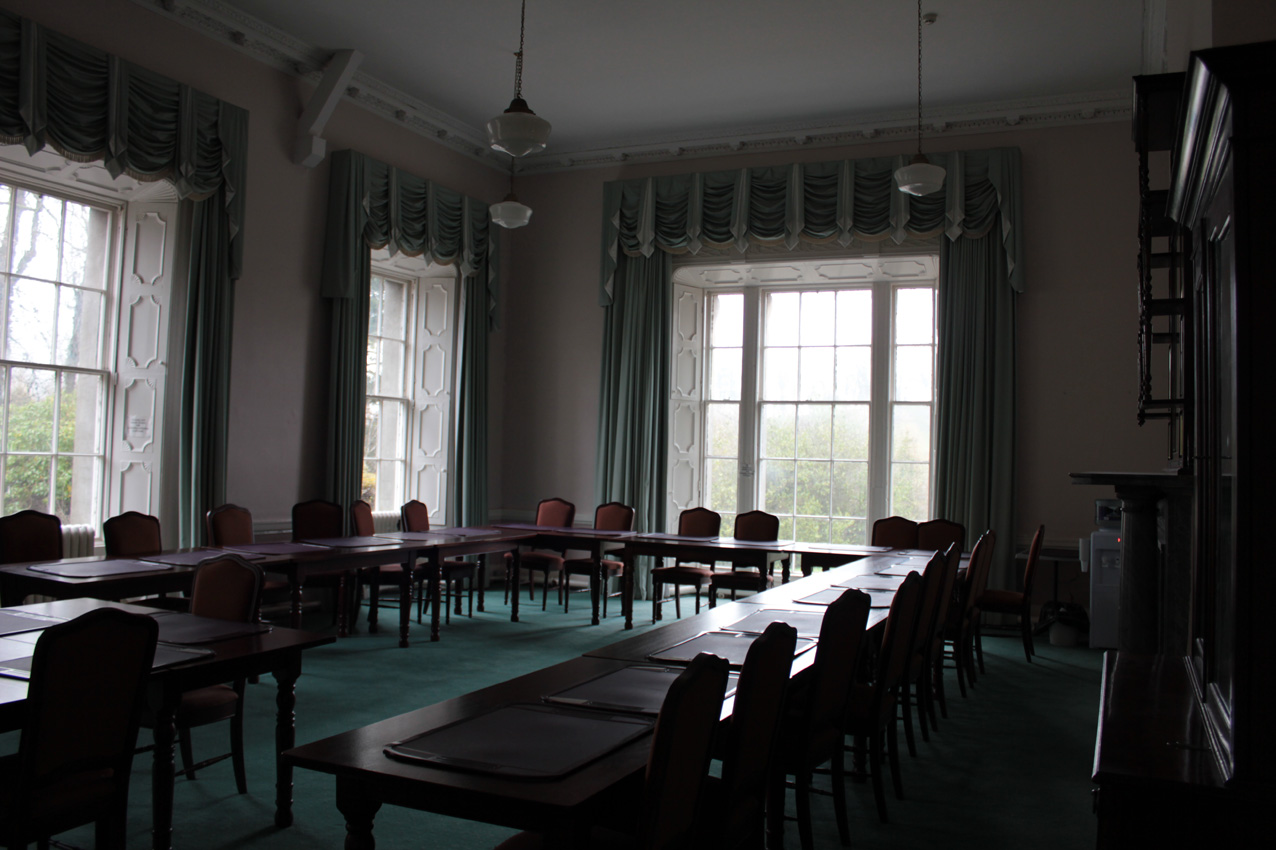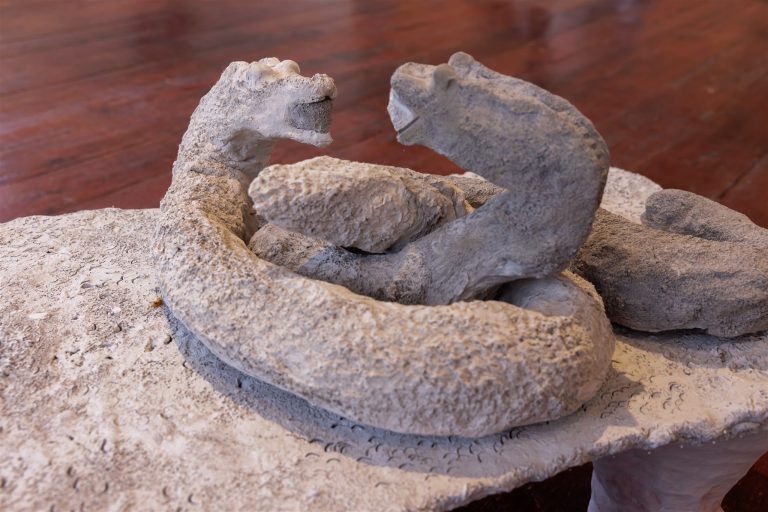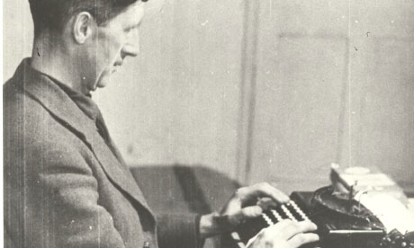A long forgotten city in the sky

I was asked to write, in February of this year, about Tracy Hanna’s work at the Bullock Lane residency in Cavan town. I visited twice during this time. Since then two very forgettable memories from over a decade ago, when I was working as a young engineer, have re-appeared to me.
One of my first jobs after graduating in 1999 was as a junior design engineer with Banagher Concrete in Co. Offaly. I spent three months there before getting another job with the Irish Rail engineer’s section in Pearse Station, Dublin. At the time Banagher Concrete were casting, among many other things, two very large reinforced concrete fins. When you walked into their workshop / factory floor, it looked as if two huge shoulder blades from some extraordinary beast had been deposited there, amid the roar and dust. You can see these fins now if you look underneath either end of the Millenium Bridge, supporting it quietly as it spans between ‘The Italian Quarter’ and Temple Bar in Dublin.
For the brief period I spent in Banagher I rented a room in the house of one of the factory operatives. His wife would make me breakfast every day – cereal, toast, rashers, egg. The egg was always boiled and always grossly underdone, but I was far too gormless and polite to say anything, and would spoon a cursory few dollops of it into my mouth each morning, wince, and leave for work. In the evenings, I would go to the pub in town and read – then walk home, the mile or so out the dark, hedge-lined road to my temporary lodgings.
When I worked with Irish Rail, I was involved in maintenance, which in terms of engineering means constantly measuring the tracks (the ‘permanent way’) – to see if they were shifting. One particular job I was given during my time with Irish Rail was to oversee the marking out of the sides of the underground tunnel that links a section of the Dublin Connolly – Heuston line. The luminous arrows used as markings were fixed onto the side of the tunnel and were supposed to indicate the location of the nearest safety alcove in the tunnel wall – for those working on the track. One day when I was working in this dingy tunnel, a large diesel engine came through, passed us by, and, after a few moments a large, ponderous cloud of dark smoke billowed slowly up upon me. When I eventually opened my eyes I could see what I think one could describe as almost nothing. Then I coughed for many minutes.
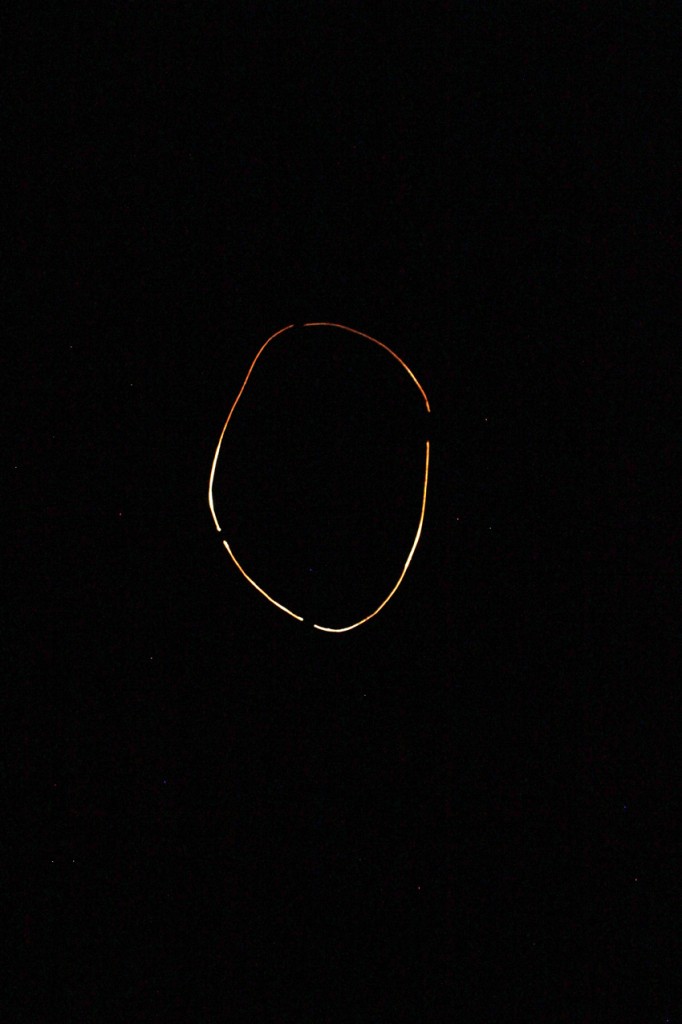
Hanna was the first artist to avail of the new Bullock Lane residency in Cavan town. The residency is the initiative of and is run by The Arts Council with Cavan town and county councils. It is a brave and welcome addition to the growing number of visual art residency opportunities appearing in rural Ireland. And their assistance in Hanna’s work here was committed and crucial.
The Bullock Lane residency building was supposed to be a semi-detached pair of two-storey dwellings. The road directly in front of the residency building, Bullock Lane, is extremely steep. It runs down to a very narrow lane (barely wide enough for a car) where it joins Main St., across from an Eason’s.
I made one visit during the residency, then I returned a couple of weeks later for the experimental final exhibition / event of the residency – Do nothing till you hear from me. It featured a number of videos, video projections and sculptures that considered the building itself in an attentive manner. At one stage I spent some time upstairs looking out the front window at some apartments across the way. The top section of the window was ajar. Out of this section dangled a chunky sculpture made from screwed together pieces of timber. The shape was almost a decagon. There were ten sides, but it didn’t complete its loop; a sort of open decagon, or a decagon that doesn’t want to be one. It swayed clumsily over and back beside my head, softly knocking on the glass.

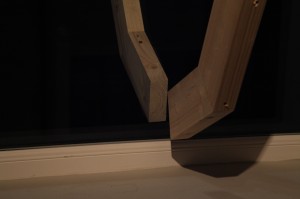
In the other upstairs room, earlier in the night, everyone who came – there were about thirty to forty people at the event – spent a very curious ten minutes in near darkness discussing this near darkness. Shiva Linga paintings, portals, space-time, sensation, etc. were also brought up, followed by silences. The room had been transformed into a sort of cave. The only light came from a series – two on one side, two on the other – of barely perceptible, egg-shaped slivers of light. The light from these slivers was that orange/yellow hew of the street lights outside. There was a smell of plywood in the room, and for a moment or two the world seemed smaller, or larger. I couldn’t say for sure.
Earlier again that night, Kate Strain (a curator) and Hanna in conversation, walked us around all of the other works on show, pausing to talk about them. At times Hanna would give responses from a scripted Q & A session that Strain had written. Sometimes, in this scripted session, her answers were simply “yes.” Other times they spoke naturally, and briefly about the works. One of the pieces on show was a projection of a mound of building rubble. The mound, in the video piece, had now been flipped around the horizontal, and it took on a sort of approximate oval shape – it seemed to hover forlornly, like a long forgotten city in the sky, trying to tell me things about its own re-making.
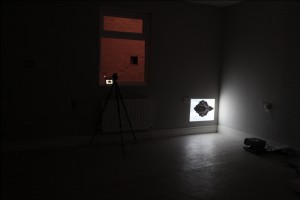
I had come across some of Hanna’s work before meeting her at this residency, her sculptural projection piece Hillwalker in the old Broadstone studio gallery, and again in the Douglas Hyde gallery in Dublin. More recently I saw her solo show A Day is a Room at The Dock in Carrick on Shannon. I called in late last year with my father, who is not a regular gallery goer. We navigated quietly around all of the sculptural / projection pieces, peering at the work and how it was presented in the darkened gallery space. He told me afterward, as we drove back to Longford, that he enjoyed the show. I am drawn toward work that people who are not in the business of art can enjoy, and can say so comfortably. I think it is because work like this wishes the viewer into it. The viewer is offered a space to extend into and play with the work, and this open-ness comes from generosity, and a sort of unspeakable precision that appeals directly to one’s movements and curiosity – a starting point that, for the viewer, is at once straightforward, fertile and exciting.
*
Ballyhaise House is about four kilometers outside Cavan Town. Hanna visited it during her residency, accompanied by a local historian called Michael Swords. She gave those who came to Do nothing till you hear from me a ‘goodie bag’ (envelope) holding a lovely collection of small photographs with exterior and interior shots of Ballyhaise House, and a short, clear text which had been written by her. The text relayed that the house was designed by an architect called Cassels. Apparently he designed Leinster House too, and that Cassels, according to Swords, had mentored the Irish architect who eventually designed the Oval Office in The White House in Washington D.C. Swords also brought Hanna on a tour of the Cavan town, where she learned:
– that the windows on the top of the Georgian front doorways were also used to throw light out onto the top steps leading up to the entrance.
– that the freemason’s hall on Farnham Street has been active since 1855, and that long before this a river had flowed where Farnham Street is now.
– that the old Cavan town center is where the Eason’s is now, and that there once was a bullring on the Main Street, where the butcher would bring out a beast before it was slaughtered and let dogs attack it so as to tenderise the meat.
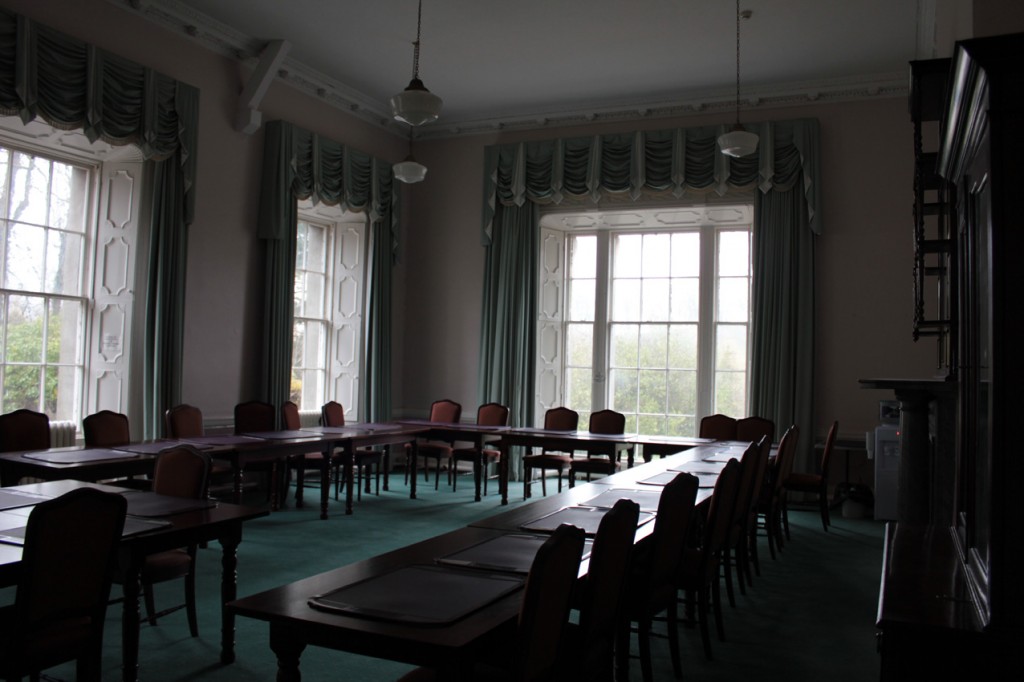
The works on show during this end of residency evening showed a moment in a process. There was a short looping video piece of a torch-lit tree projected in the front room of the residency building. Alongside the projection was a small forest made from curved strips of plywood. These strips were wedged vertically between the floor and the suspended ceiling causing some of the ceiling tiles to pop up and out of their railings, revealing a furtive non-space between the tiles and the first floor. Another sculptural piece upstairs comprised a tube of thin white polythene spanning between two radiators, the hot air from the radiators inflating, and gathering the polythene into an uncertain, shallow arch. It split the room, and people had to navigate awkwardly under or over it.
There was another small video piece projected onto the reveals of one of the ground floor windows. It showed a hedge-lined road leading out of Cavan town, again, flipped on the horizontal like the mound piece, only here an absence was created giving us a sort of tunnel to a strangely recognisable world, or offering a route to another place of forgotten memory. The movement from sculpture to thwarted documentation to a mixture of the two spoke of the building itself, the steep lane outside, the apartment complex across they way, the enveloping town and its histories from below, the ruptures outward to the suburbs, and further to Ballyhaise House. All of these fragments were collected with a gentle curiosity and re-presented in an affecting way that offered brief moments of mystery to re-imagine into.
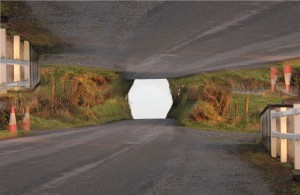
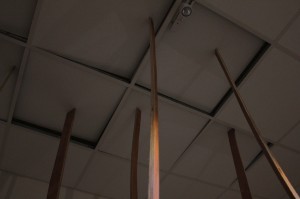
Adrian Duncan is a writer based in Dublin.
_______
All images courtesy of Tracy Hanna.
List of images:
1. Test 1 (Mound), installation shot, 2012
2. Test 9 (Oval), installation shot, 2012
3. Test 3 (Plastic Haircut), Test 4 (Plastic Tube), Test 5 (Undecagon) –detail, installation shot, 2012
4. Test 5 (Undecagon, with missing piece), installation shot, 2012
5. Test 1 & 2, installation shot, 2012
6. Ballyhaise House interior ( photograph from goodie bag), 2012
7. Test 6 (Polygon Tunnel), film still, 2012
8. Test 10 (plywood intervention) – 5, installation shot, 2012
Many thanks to Tracy Hanna, and Catriona O’Reilly of Cavan County Council.
Cavan County Council’s arts programme is supported by the Arts Council.

